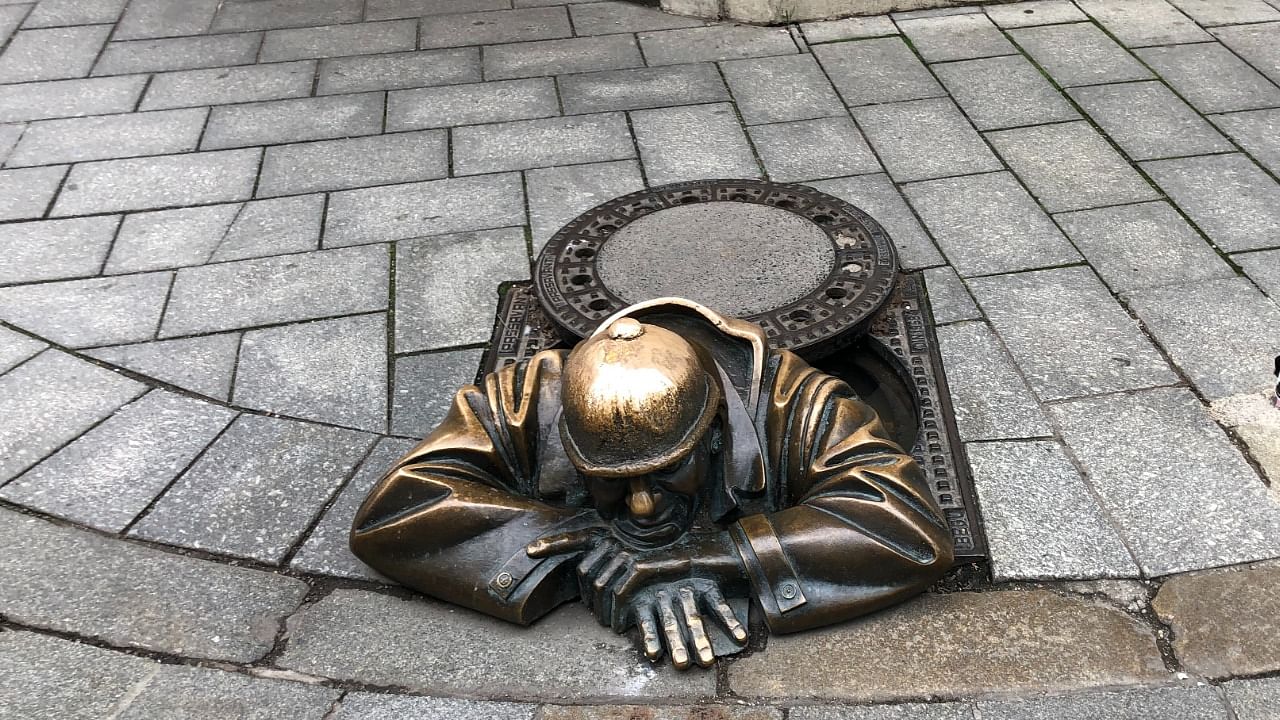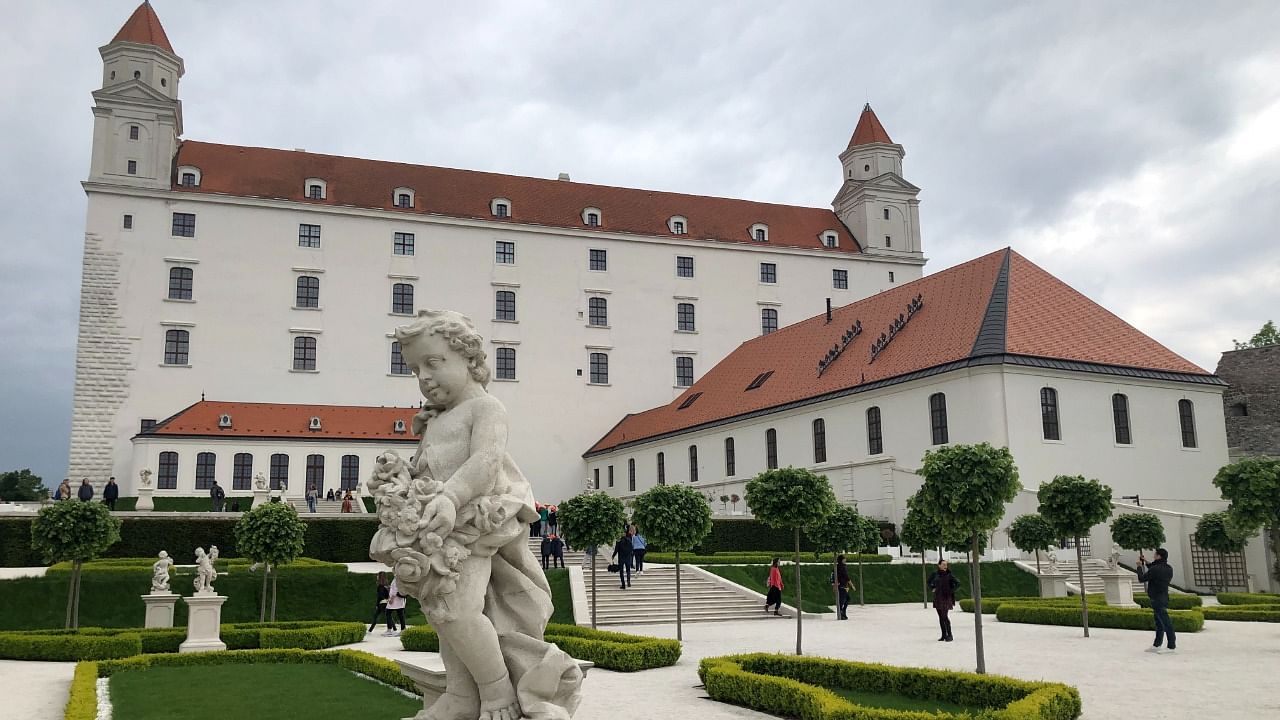

My tryst with the Slovakian capital, Bratislava, the "little big city," began in front of an open manhole in the Old Town. Peeping out was a man cast in bronze with his hands resting on the ground as he looked up. "Well, he could be a pervert; you never know," laughed a busker as a couple of tourists bent down to take selfies with him.
Plumber Cumil as he is called, is one of the iconic sculptures of Bratislava. Carved by Viktor Hulik to add a dash of humour to the city, locals joke that he is just sitting there, after a hard day's work, looking up skirts ("Cumil" means "The Watcher").
Created in the late 90s, these pieces of art are everywhere. Looking around, you might bump into Napoleon's Soldier, who leans casually against a chair and watches life pass him by.
Bratislava may seem eclipsed by glamorous neighbours like Budapest, Prague and Vienna, but its vivacious charm is slowly working its magic on the tourists who are discovering the medieval city and its stories.
I, for one, fell in love as I entered through the only remaining portal of the fortified city, Michael's Gate. A tower by the same name is at the end of the street that you could climb for the views. Or, wander the roads, losing yourself in this vibrant city filled with charming cafes, boutiques and souvenir shops.
Pottering around the pedestrianised Old Town, I found myself in the main square, filled with monuments inspired by different architectural styles and entwined with historical narratives.
Every brick told a story: palaces, cathedrals, museums, theatres, town halls, markets. There was a time during the communist era when the Old Town was almost stripped of its heritage. Eventually, it was restored and recreated post-independence.
I visited the Old Town Hall, City Museum, Slovak National Theatre, and St Martin's Cathedral spread around the Old Town and its boulevards and squares. The monuments lent an air of antiquity, but the city's old-world charm and youthful zest created a unique vibe.
Several palaces like the Primatial Palace, the Mirbach Palace, and the Presidential Palace exist. The classical façade of Zichy's Palace and the Baroque-style Palify Palace are the beautiful homes of erstwhile counts and dukes.
However, nothing is more stunning than the Bratislava Castle, built atop a hillock overlooking the Old Town.
The imposing four-towered fortress painted in white was rebuilt just 70 years ago. You can even glimpse Austria and Hungary on a clear day as the River Danube charts her course through the three countries.
Bratislava is full of surprises, and I was fascinated to see a spaceship on a bridge, an observatory referred to as the UFO Bridge and Tower. But the most unusual monument is the century-old Church of St Elizabeth, popularly called The Little Blue Church, which seemed straight out of a picture postcard.
The church, once the chapel of a school on the premises, has been designed in the same architectural style. The candy blue facade, the roof layered with blue titles, and the blue mosaic and majolica (a kind of ornate clay pottery) in the interiors were charming. For a moment, I felt like I was in Hogwarts, in a world of candy, custard, and whimsy.
(Lakshmi Sharath is a storyteller, travel writer, blogger and media professional from Bengaluru.)